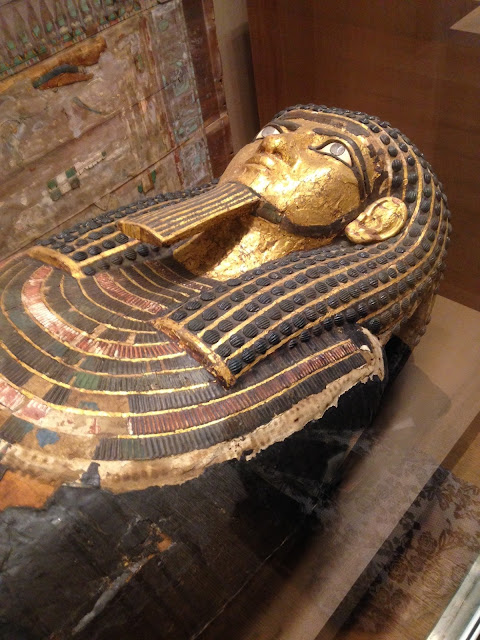Day 379 - Early religious paintings
October 17, 2024
After viewing the assemblage of altarpieces, panels that were once part of altarpieces, and other paintings in this large gallery (601), my initial sense was that they lacked coherence. The majority of the works I first viewed as I made my way around the room are by 14th and 15th century Italians - mostly Sienese (despite the concurrent special exhibition of Sienese painting a short distance away on the second floor, where some of the greater masterpieces have undoubtedly been transferred), but also painters from Florence, Arezzo, Cortona, and other locations. Inexplicably to me, the gallery also includes paintings by French, Netherlandish, and German artists. Then I went back and reread the gallery description, located in a not very prominent place, and saw that the unifying trend is that early paintings were religious in nature - nothing more, nothing less. I wonder how many visitors to the museum would be unaware of this, although, interestingly, the description attributes the development of religious art in Europe to the sacking and looting of Constantinople, which led to the dispersal of icons and other artworks.
What’s shocking and ill-advised, I think, is that a large Max Beckmann triptych entitled "The Beginning" is what the viewer is likely to see when entering the gallery - that's what I first saw, at any rate. "The Beginning" here refers to childhood; the central panel features a boy on a rocking horse. Its size, bright colors, and dark, cartoonish outlines detract from the delicacy of the gallery's other images. Why is it here? It has no religious significance. Because it’s a triptych - it's related to the other works in form, not content. So what? Actually, I don’t mind it being placed in this gallery, but not as the main object of attention.
The work to which I especially respond is a small (perhaps 20 inches wide and 36 inches high) panel depicting Saint Anthony of Padua. The painting, in tempera on wood, with a gold ground, was made around 1340 by Maso di Banco, a Florentine artist whom the Met curator responsible for the descriptive placard terms Giotto's greatest student. The saint was originally part of an altarpiece whose central panel is now in Berlin. I like the work for its simplicity and its sensitive modeling of the saint's face, shown in three-quarter view. I wonder which saint occupied the opposite panel of the altarpiece facing Anthony. On one hand, it's sad that altarpieces have been ripped apart; on the other, we can be grateful to see any part of Maso's work here.





Comments
Post a Comment